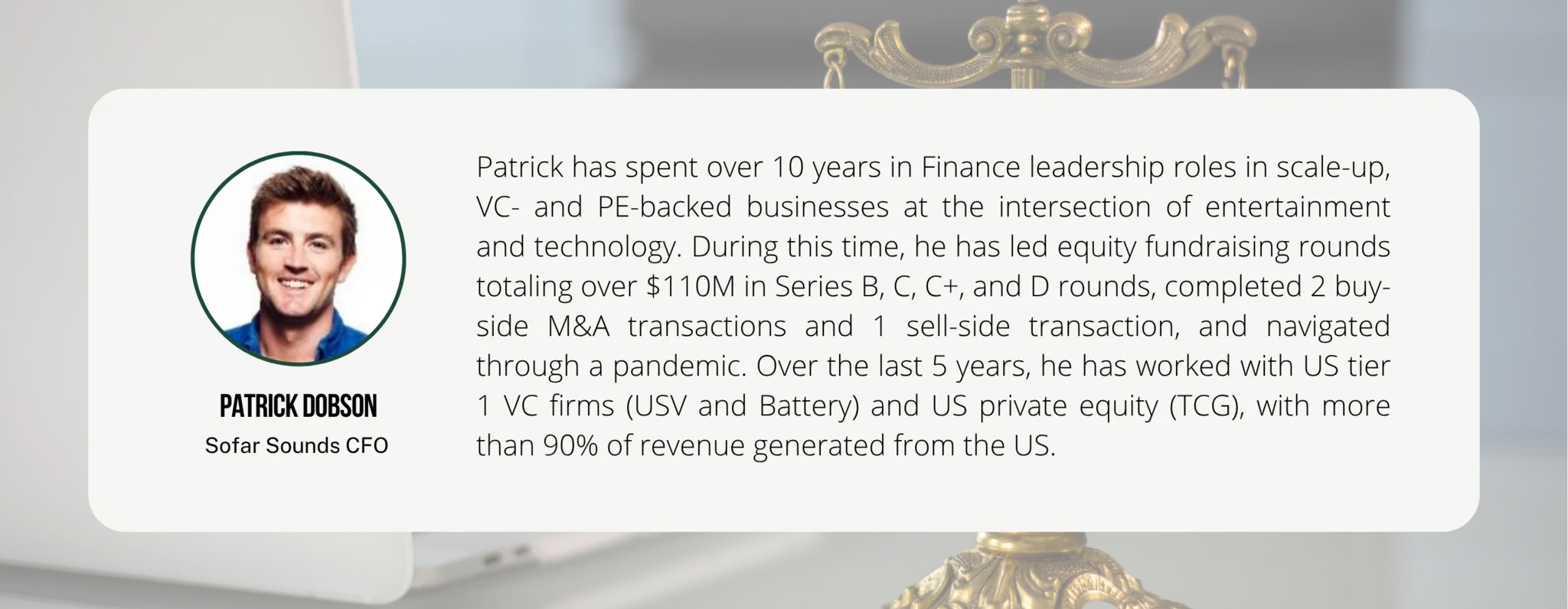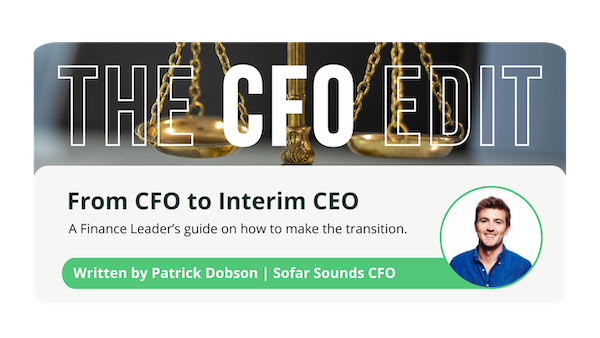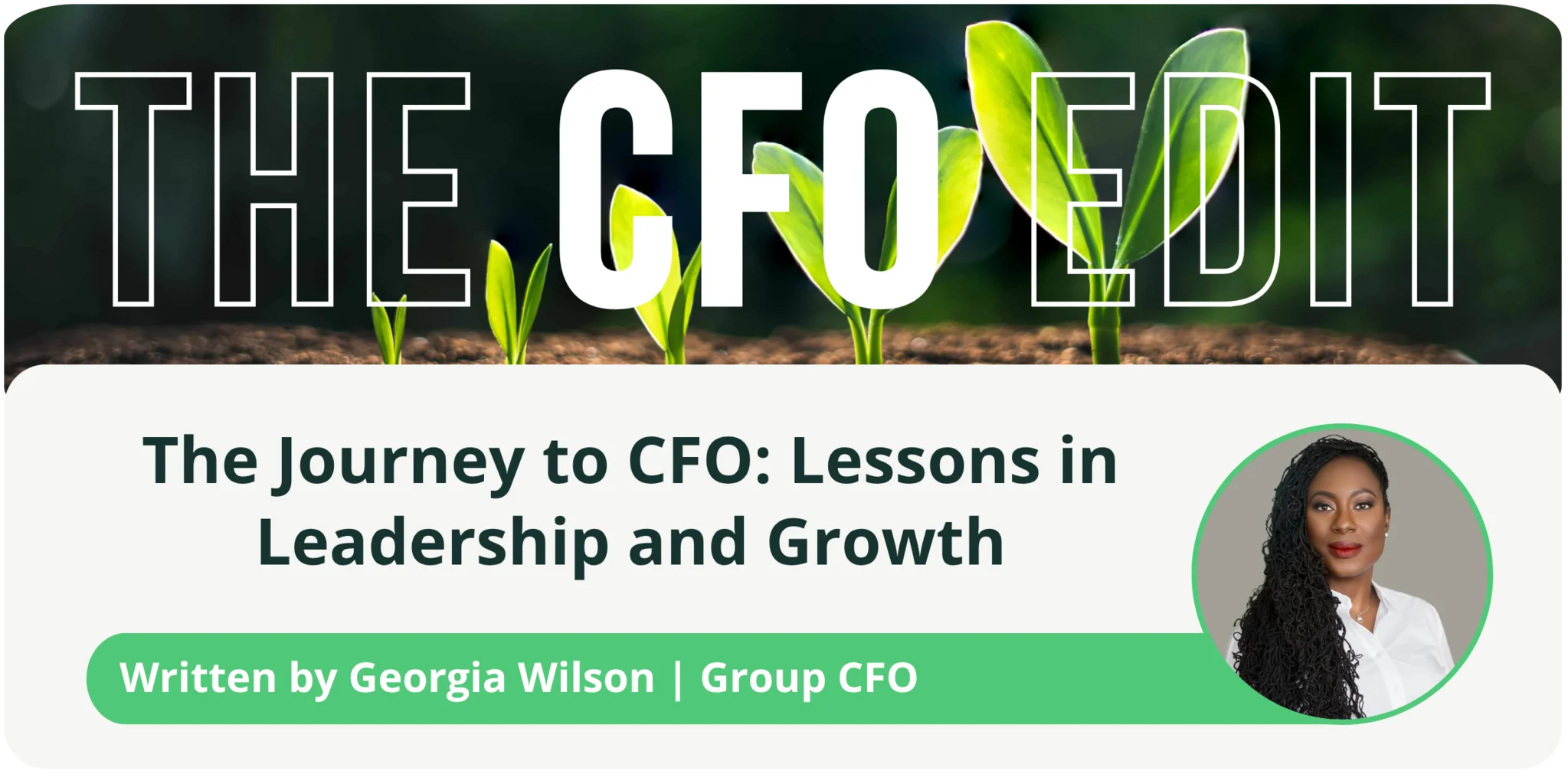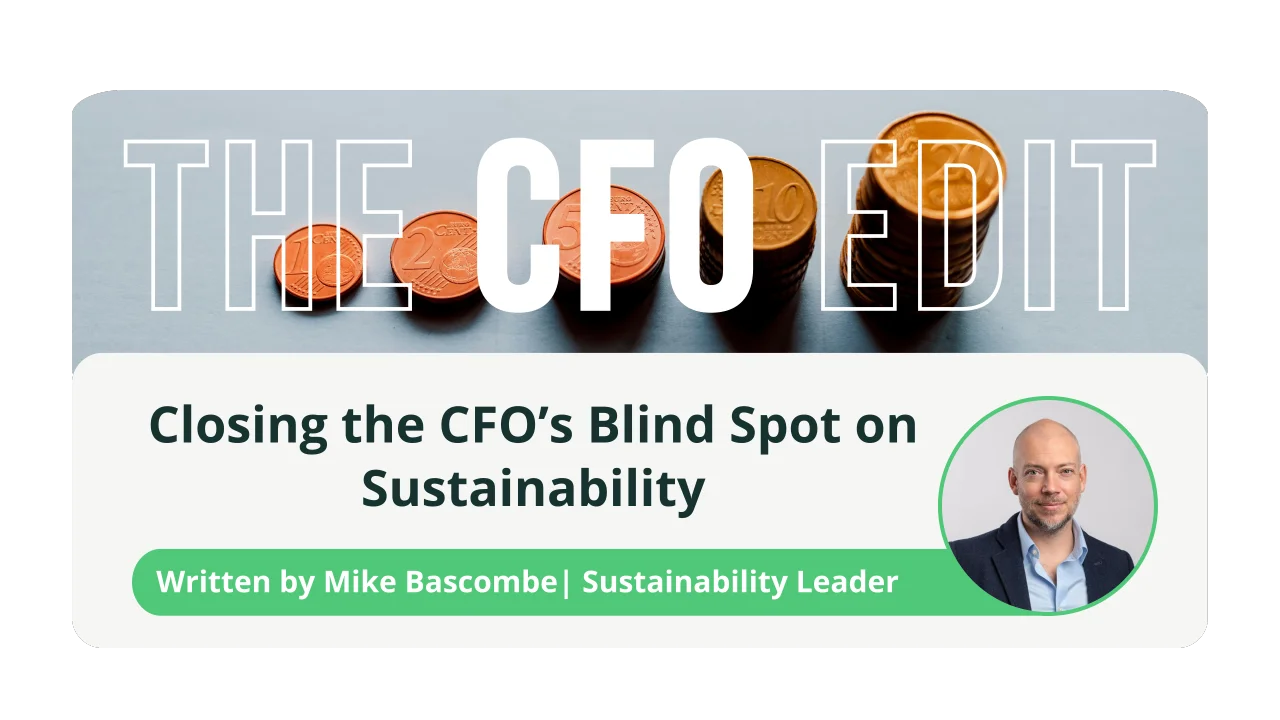Stepping in as Interim CEO from a CFO position is one of the most significant transitions a finance leader could face in their career. While CFOs have deep commercial insight and strategic awareness, being in the top seat brings new challenges. In this article we will be exploring how to navigate this transition, from the perspective of Patrick Dobson, CFO at Sofar Sounds.
Patrick had been with Sofar Sounds for over 8 years when the opportunity to become Interim CEO arose. Sofar Sounds, a global marketplace for live music experiences, had gone through a tough period during the pandemic. But coming out of it, the company made bold moves to diversify revenue streams and strengthen the business model. It paid off and within a year of the pandemic ending, Sofar Sounds closed a Series D funding round with The Chernin Group (TCG).
In the summer of 2024, the CEO decided it was a good time to step down and focus on other projects. He recommended to the board that Patrick take the interim CEO role and the board accepted the recommendation.
Why CFOs are the obvious choice for Interim CEO
The CFOs’ ability to manage financial complexity and drive strategic decisions makes them a logical choice during leadership transitions. They have visibility over financial performance, operations and stakeholder relationships so they are well placed to take on the broader demands of the CEO role and giving them the insight and agility to act quickly and decisively, even in high-pressure situations.
Although the transition from CFO to CEO seems obvious, it doesn’t make it easy. Patrick flew to Boston to meet with the outgoing CEO to put together a transition plan. Moving from CFO to CEO meant he had to quickly align with the leadership team and have a clear strategy while under the microscope from the board and investors. “You’ve got to have a support network and internal resilience to be successful.”

Setting the Strategic Foundation
Patrick’s top priority was to create stability and align the leadership team around a clear strategy. He knew that as an interim CEO he didn’t have the mandate to fundamentally change the business model but he needed to define clear achievable goals that would give the company focus and momentum. “My mandate was for a six-month period, and really my focus was on preserving as much optionality as possible for the incoming CEO — but also making sure that we were developing proof points, experimenting, and driving toward profitability.”
When stepping into a CEO role, you need to quickly define two or three core priorities that will be the framework for decision making and resource allocation. Aligning the leadership team around those priorities is critical, so everyone is committed and clear on the direction of the business to prevent confusion and drive consistent execution. Once the leadership team is aligned, communicating those priorities to the wider business creates stability and focus during the transition.
Establishing this strategic foundation is critical to building credibility with the board and investors. It also gives the company a structured plan to follow during a period of significant change.
The Mindset Shift
Stepping into a CEO role from a CFO position isn’t just a change of responsibilities - it’s a complete change of mindset. As CFO the focus is primarily on financial health, risk management and supporting the business strategy. But as CEO the responsibility extends to defining the strategy, setting the tone for the organisation and managing internal and external expectations.
Patrick admitted this shift brought on serious imposter syndrome, especially in the early days. Even though he’d been at Sofar Sounds for over 8 years and knew the business inside out, the shift in accountability was massive. Suddenly he wasn’t just influencing decisions - he was the one making the final call. This is where having that support network is key, when the momentous feels too much. “The first person I went to was Rafe – Sofar Sounds Founder, who was still on the board as chairman, he became a key partner of mine. I remember one time I rang him and said, ‘Rafe, I don’t know how to get through this day.’ We had a board call coming up. And he said something that really put me at ease. He said, ‘If you’re not feeling like that at some point in your mid-thirties, you’re not doing something right in your career.’”
Patrick also leaned on his dad who was an ex-lawyer, who became an important sounding board during the transition. The regular calls helped Patrick feel less alone and gave him the reassurance he was making the right calls.
The imposter syndrome wasn’t about lack of skills - it was about being in the spotlight and managing the extra visibility and pressure that comes with being the CEO. Decisions Patrick would have weighed in on as CFO were now his to make. The transition required him to trust his instincts and back his judgment, even when the pressure was high.
It’s natural for CFOs stepping into a CEO role to feel out of their depth at first. That’s why it’s so important to build a strong network of trusted advisors, board members and senior leaders. Being open about the challenges and leaning on that network for guidance can make the transition less isolating and give you the confidence to grow into the role.
Balancing Strategy and Execution
Once CFOs are settled into the CEO role and have aligned the leadership team around clear priorities, the next challenge is balancing long-term strategic goals with immediate business pressures.
The leadership team made a big decision to shift marketing strategies to locally driven initiatives, which ultimately led to the team significantly reducing central paid marketing knowing this would likely lead to a lower revenue run rate in the short term but better capital efficiency in the medium to long term.
Simplifying the business was a big part of balancing execution with long-term strategy. Patrick used the framework from John Doerr’s Measure What Matters to define clear, high-impact goals. He resisted the urge to track too many KPIs even though there was pressure from investors and stakeholders to show progress across a wide-range of metrics.
Patrick focused the business on two key strategic pillars:
- Community – Build the connection with artists and audiences to improve engagement & brand loyalty.
- Magic – Focus on the quality and uniqueness of Sofar Sounds live experiences to differentiate the business and create long-term value.
Focusing on fewer, more impactful goals allows the business to make faster decisions and measure progress more easily. This clarity of focus should make it easier to communicate the strategy to the wider business, align the teams and build credibility with the board.

Leveraging Existing Strengths as a CFO
One of the biggest advantages for CFOs stepping into an Interim CEO role is their deep commercial understanding of the business. As CFO, Patrick’s ability to see the business through a financial lens helped him know where to focus resources and where to pull back.
“I guess it’s just the deep commercial understanding of the business - where the challenges and opportunities lie. That made it easier once I was in the role to come up with goals and strategies and then distill that down into the business.”
His financial background also gave him confidence when working with the board and investors. Having already built credibility through previous funding rounds and financial planning cycles, Patrick was able to manage investor expectations and communicate the rationale behind his decisions.
Don’t underestimate as CFO, how broad your reach is across the team – finance may be your core area but naturally your role expands over the years to include oversight of operations and strategic planning. Therefore, you may not need to develop new skills from scratch but instead, adapt those existing skills to a broader remit.
CFOs who transition into a CEO role should lean into their financial expertise but not be limited by it. Understanding how to allocate resources efficiently, manage cash flow and monitor profitability are all critical CEO skills, but so is setting a vision and empowering the leadership team to execute it. Successful CFO-to-CEO transitions happen when financial rigor is balanced with strategic clarity and team alignment.
Building Resilience Under Pressure
Leading a business through a period of change requires more than strategic clarity, it demands emotional resilience and the ability to stay steady under pressure. As CEO, Patrick had to manage not only the operational demands of the business but also the increased expectations that came with the extra visibility of being at the top.“The transition required me to trust my instincts and back my judgment, even when the pressure was high.” He built resilience by keeping the board and key stakeholders informed and instead of avoiding difficult conversations, he leaned into them - seeking input and adjusting his approach based on feedback. “I felt the more I could be communicating with the board, the more I was making decisions with their buy-in — I wasn’t overstepping my mandate.”
Building resilience as a CEO isn’t about having all the answers, it’s about developing the emotional stamina to handle uncertainty and pressure. CFOs stepping into a CEO role need to stay connected to their support network, communicate regularly with stakeholders and trust their strategic instincts even when decisions are hard.
Managing the Dual Role of CFO and CEO
If you are like Patrick and haven’t made a full transition to CEO but are instead taking on the interim role while still holding the CFO position, then you are up against a unique set of challenges. Managing two senior roles simultaneously means balancing strategic leadership with day-to-day financial demands of the business - all while navigating the increased visibility and pressure that comes with being the CEO.
Patrick knew that succeeding in both roles would require delegation and trust in his team. “We didn’t backfill my role — which I think was only possible because I had two really strong director-level reports on the FP&A side and on the controllership side.” Patrick gave his finance leaders more autonomy and communicated clearly about how his time and focus would shift. “I essentially said to them that 75% — maybe more, like 80% — of my time was going to be spent with the other functions. So, you are running your individual parts of the finance function with far less management and oversight from me.”
You have to recalibrate how you manage your time and energy. Leading the business means stepping away from some of the more tactical financial work and focusing on strategic decisions that will drive long-term growth. Balancing work and life became harder for Patrick with the increased demands of the CEO role. The responsibility didn’t switch off when he left the office and the pressure to deliver results - both financially and operationally - was constant. Building resilience and setting boundaries became essential to sustain his performance in both roles. For CFOs stepping into a dual role, the key is to be clear about where you add the most value and then empower your team to handle the rest. Delegation and trust are key. Without a strong leadership team in place trying to do both roles simultaneously can become overwhelming.

From CEO to Sharper CFO
Although daunting, this experience will force you to grow exponentially.
The experience forced Patrick to get out of the finance function and take responsibility for the company’s overall strategy, operations and leadership which gave him a more complete view of how to run the business.
“It’s definitely increased my resilience tenfold. I think it’s developed some of the softer skills in a way and I definitely feel more confident in a boardroom.”
One of the biggest challenges Patrick faced as CEO was learning to distil complex decisions into clear, strategic direction for the leadership team and the wider business. “What I found most challenging in the six months was communication - so I really tested those skills and that will definitely stay with me and make me a more rounded CFO.”
The opportunity to be CEO will help you focus on what really matters, both strategically and operationally. The exposure to managing investor relationships, leading cross-functional teams and setting the overall business strategy gave Patrick a stronger foundation as a CFO. He emerged from the experience more confident in his decision making, more effective in the boardroom and better equipped to shape the future of the business.
Conclusion: How to prepare for the CFO-to-CEO transition
Patrick’s experience of stepping into the CEO role highlights the opportunities and challenges of the CFO-to-CEO transition. While CFOs are often natural successors to the CEO role due to their strategic and financial expertise, succeeding in the role requires more than commercial understanding - it demands leadership, resilience and the ability to set a clear strategic direction.
For CFOs considering or preparing for the CEO role, Patrick’s journey offers some key takeaways:
- Define your priorities early. Focus on 2 or 3 core strategic pillars to align the leadership team and give the business a clear direction.
- Delegate and trust your team. Stepping into the CEO role means stepping away from some of the day-to-day financial work. Trust your team and empower them to own it.
- Lean on your network. Whether it's the board, trusted advisors or family, having people you can go to for advice and perspective will help you manage the pressure of leadership.
- Focus on what really matters. Resist the temptation to measure too many things. Keep the business focused on high-impact metrics that deliver real outcomes.
- Build resilience and trust your instincts. Decisions won’t always be easy and setbacks will happen - but staying calm under pressure and trusting your judgment is key to leading effectively.
Being a CEO isn’t about having all the answers - it’s about having the confidence to ask the right questions, set a clear direction and build a team that can deliver on that vision. For CFOs considering the transition, Patrick’s journey shows that the skills and experience built in finance can serve as a powerful foundation for success at the very top.

If you wish to be notified about future CFO Edits or events we host, sign up to our mailing list here. As an expert in partnering with early-stage tech start-ups, feel free to get in touch if you require advice or are keen to hire that first or even second person for your finance function.
Check out some of our other blogs:
- The CFO Edit | Mastering Cashflow Management
- The CFO Edit | How to Transition from VP Finance to CFO
- How to Assess if Your Startup is Ready for a CFO
- Salary Guides: Insights from the UK and New York




